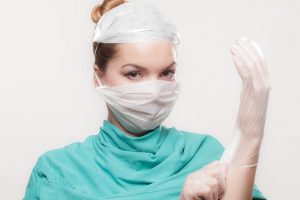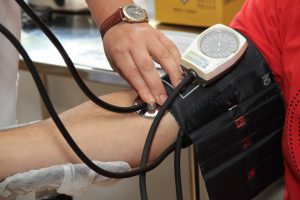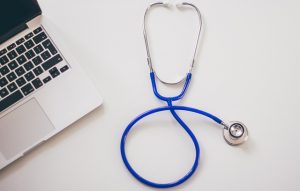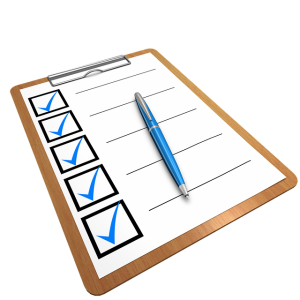Over the last few weeks, we’ve been talking about the USMLE Step 1 and Step 2. As an aspiring medical resident, you have to pass both of these exams before you can move on to USMLE Step 3. Success on all three USMLE exams is a prerequisite for ECFMG certification. Therefore, if you’re a foreign medical graduate looking to get matched to a residency program in the United States, passing these exams should be one of your top priorities.
The USMLE Step 2 consists of two parts. As we discussed in two previous posts, the USMLE Step 2 – CS tests your clinical skills during real-life patient encounters. The second part of Step 2 is the Clinical Knowledge (CK) section. Like the USMLE Step 1, the USMLE Step 2 – CK is a written test that requires you to demonstrate your expertise in the field of medicine. Read on to learn more about the content of the test and the format of the questions.
The Content of the USMLE Step 2 – CK: What To Expect
Put simply, the USMLE Step 2 – CK tests your knowledge of the concepts of clinical science that the USMLE committee members have decided are the most important for medical residents to possess. The specific material can vary slightly from year to year, but the general content tends to remain the same. There are two ways that the the content of the exam can be broken down: in terms of Scientific Topics and in terms of Physician Tasks and Competencies.
Scientific Topics
When approached from the perspective of Scientific Topics, the USMLE Step 2 – CK can be broken down into three categories, each accounting for a certain proportion of the exam. The first category, General Principles of Foundational Science, typically takes up 1 to 3 percent of the exam. The second category includes Biostatistics, Epidemiology, Population Health, and Interpretation of the Medical Literature. These topics typically take up 1 to 5 percent of the exam. That means that the vast majority of the USMLE Step 2 – CK is dedicated to the third category, which encompasses body systems and tissues. This category accounts for 85 to 95 percent of the exam. The topics that fall within this category include:
- Behavioral health
- Cardiovascular system
- Circulatory system
- Endocrine system
- Gastrointestinal system
- Lymphoreticular system
- Musculoskeletal system
- Nervous system and special senses
- Pregnancy, childbirth, and the puerperium
- Renal System
- Reproductive system (male and female)
- Respiratory System
- Skin and subcutaneous tissue
- Urinary system
- Multisystem processes and disorders
Physician Tasks and Competencies
Another way to divide up the content of the USMLE Step 2 – CK is in terms of Physician Tasks and Competencies. Approaching the exam from this perspective can help you understand exactly what aspects of the Scientific Topics you will be tested on. Each of the four competencies accounts for a significant proportion of the exam.
- Medical Knowledge / Scientific Concepts
This competency makes up 10 to 15 percent of the test. Questions that fall in this category are direct, straightforward questions about the Scientific Topics listed above.
- Patient Care / Diagnosis
This competency makes up 40 to 50 percent of the test. Questions that fall within this category examine your ability to:
- Interpret information from a patient’s medical history and physical examination
- Interpret information from laboratory and diagnostic studies
- Make a diagnosis
- Provide a prognosis
- Determine expected patient outcomes
- Patient Care: Management Health Maintenance / Disease Prevention
This competency makes up 30 to 35 percent of the test. The questions that fall within this category will test your knowledge of:
- Clinical intervention strategies
- Pharmacotherapy
- Mixed management
- Surveillance techniques to prevent disease recurrence
- Professionalism
This competency takes up only a small proportion of the exam: between 3 and 7 percent. Questions within this category will assess your knowledge of:
- Professional conduct for health care providers
- System-based practice
- Patient safety
- Practice-based learning and skill development
Question Types on the USMLE Step 2 – CK
All of the questions on the USMLE Step 2 – CK are multiple choice questions. Some of the questions are single-item questions, while others are sequential item sets. For the single-item questions, you will be provided with a short vignette that ends with a question, and you will need to choose the best answer from among a set of lettered choices. For the sequential item sets, you will be given a vignette that is followed by several multiple-choice questions that assess your knowledge of different aspects.
The way that the questions are framed can vary depending on the scientific topic or physician competency that is being assessed. Some questions ask you directly for information about a scientific concept. Others provide a story about a clinical situation that you might encounter as a physician. Still others provide a research abstract that you will need to interpret. Being prepared to see all of these question types is crucial for success on test day.
Looking for more advice on the steps you have to take to get matched to a U.S. medical residency program? Contact FMG Portal today!









